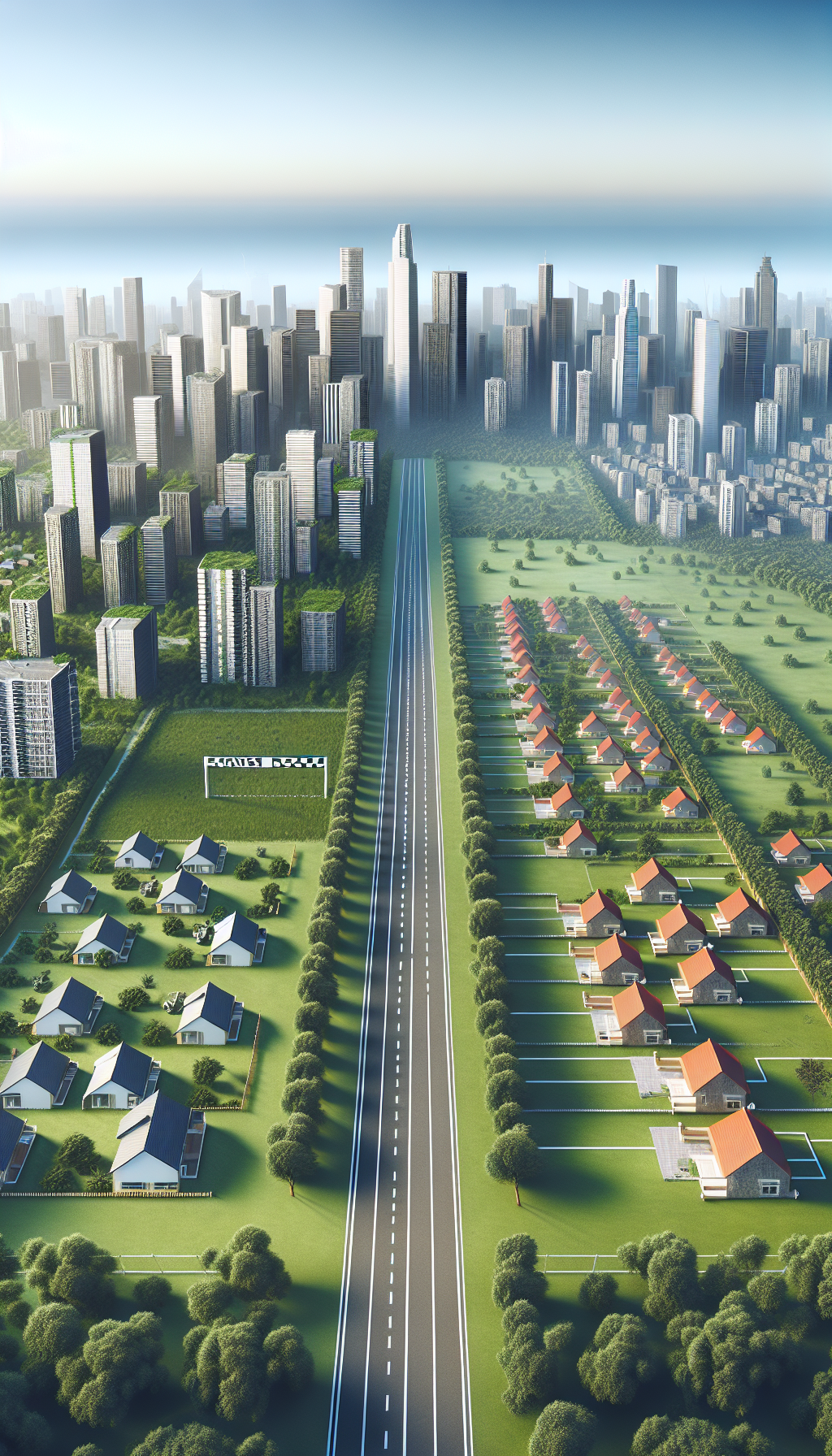Urban vs. Suburban: Which Area is Winning the New Home Development Race?
Current Trends in Home Development
The landscape of home development is evolving, influenced by shifting demographics, lifestyle preferences, and economic factors. Urban centers have long been the focal point of new home development due to their convenience, access to amenities, and vibrant job markets. However, the suburban regions are making significant gains, particularly in the wake of recent global events that have influenced where and how people want to live.
Demographic Shifts Driving Development
One of the foremost factors in home development trends is demographic change. Millennials and Gen Z populations are starting to enter the housing market, and their preferences lean towards quality of life over sheer accessibility. Polished urban environments are still attractive, but these generations are showing increasing interest in suburban living for its affordability, family-friendly amenities, and nature-oriented lifestyles.
The Appeal of Urban Living
Urban areas still enjoy numerous advantages in attracting new homeowners. Cities offer:
-
Proximity to Work: Many urban dwellers appreciate living close to their workplaces, which reduces commute time and enhances work-life balance.
-
Cultural Amenities: Access to theatres, museums, restaurants, and nightlife makes cities vibrant. Ongoing urban development often adds new experiences, making city living attractive.
-
Public Transportation: Well-developed transportation systems minimize the reliance on personal vehicles, making urban living a more eco-friendly choice.
-
Diversity and Community: Urban areas tend to be more culturally diverse, fostering a sense of global community, which appeals to younger generations.
However, cities are also grappling with challenges such as rising living costs, overcrowding, and sometimes inadequate infrastructure that can detract from their appeal.
The Surge of Suburbia
Suburban areas are not only catching up but, in some cases, surpassing urban locales in new home developments. The attractions include:
-
Affordability: Home prices in suburban regions are generally lower than in urban settings, drawing families and first-time homebuyers seeking more space for their budgets.
-
Space and Privacy: Suburbs typically offer larger homes with yards—features that are increasingly appealing to families with children, pets, or a penchant for outdoor activities.
-
Community-oriented Lifestyle: Many suburbs develop around a sense of community, featuring parks, schools, and local events that foster connection and engagement among residents.
-
Remote Work Flexibility: The rise of remote and hybrid work models has allowed people to rethink their living choices, with many opting for the spacious, quieter settings of suburban life, moving from high-cost urban areas.
Infrastructure and Amenities
New developments in both urban and suburban regions are both aimed at enhancing livability. In urban settings, developers are addressing high-density challenges by creating mixed-use properties that integrate residential living with commercial spaces, creating convenience for residents.
On the other hand, suburban development is increasingly focusing on smart growth principles. Developers are designing communities that include pedestrian-friendly spaces, bike paths, and access to public transportation, blurring the traditional lines between urban and suburban living.
Challenges in Urban and Suburban Development
While both urban and suburban areas have their appeal, they each face challenges.
In urban settings, escalating real estate prices can limit access for new homebuyers while infrastructure struggles under the weight of increased population density. Environmental sustainability is also a growing concern; cities must manage green spaces and pollution levels as they expand.
Suburban areas, however, grapple with the risk of urban sprawl. The drive for new developments can lead to lost farmland and natural habitats. Moreover, suburbs traditionally have less robust public transportation networks, which may hinder accessibility for those without cars.
Sustainability Trends
Sustainability is a growing concern across both urban and suburban developments. Urban developers are implementing eco-friendly building techniques, energy-efficient designs, and green spaces to mitigate their environmental impact. LEED-accredited constructions are becoming more common, focused on responsible resource consumption and minimizing carbon footprints.
In the suburbs, sustainable development often takes the form of building homes with energy-efficient appliances, solar panels, and responsible land-use planning. As more buyers prioritize environmentally friendly homes, both urban and suburban developers must adapt to meet these demands.
The Role of Technology
Technology is also playing an integral role in the evolution of home developments. Smart home features are becoming standard across both urban and suburban housing, providing convenience, safety, and energy efficiency. Developments are increasingly incorporating technology into planning and design, making communities more connected and efficient.
Additionally, virtual reality tools are revolutionizing the buying experience, enabling potential homeowners to visualize properties before they visit in person. This trend is equally beneficial in both urban and suburban settings, allowing developers to attract buyers regardless of location.
Future Outlook: Urban vs. Suburban
As anticipated trends continue to unfold, the balance between urban and suburban developments will likely depend on societal acceptance of new work environments, family structures, and lifestyle aspirations. Emerging hybrid models combining urban conveniences with suburban space may define the future of home development.
Collaborative spaces, remote work influences, and demand for sustainable living will push both urban and suburban developers to innovate and evolve. Stakeholders must remain vigilant regarding community needs, environmental challenges, and demographic shifts to align developments with the expectations of future homeowners.
Conclusion
In this ongoing race, both urban and suburban developments are adapting to the shifting landscape of homebuyer preferences. It is not about which area is definitively winning; rather, it is about how both can meet the demands of modern living for today’s diverse populations. The ultimate victor will be the locations that successfully address lifestyle aspirations, affordability, environmental responsibility, and community building in their developments.

